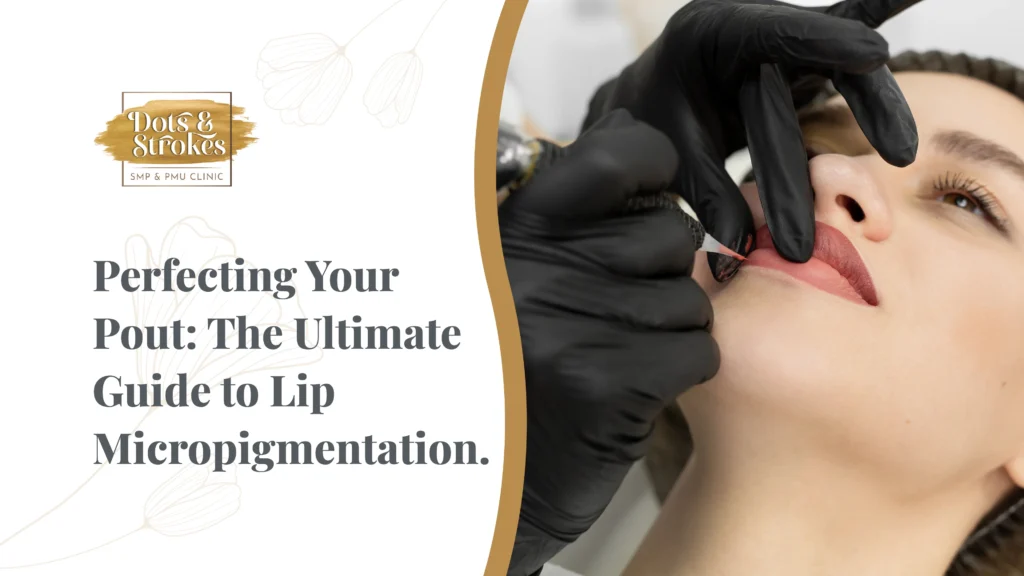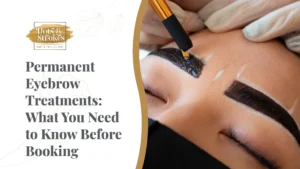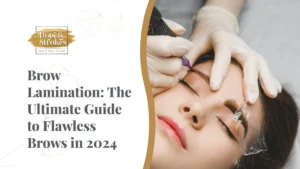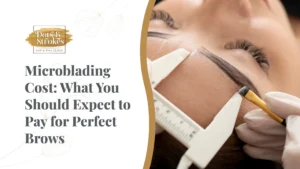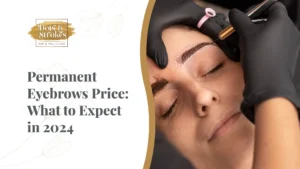Within the past years, lip micropigmentation has been something of a coming-of-age beauty treatment for most people who aim to perfect both the natural colour and shape of their lips. This half-permanent makeup is done to help people seeking a more defined pout with a fuller appearance without daily applications of lipstick or liner. Be it asymmetry correction, adding subtle tints, or dramatic results, lip micropigmentation can help in acquiring long-lasting results.
In this article, we will speak about everything connected with lip micropigmentation: how it is done, what to expect from the procedure, and how to choose a professional who would take good care of your lips.
What is Lip Micropigmentation?

Lip micropigmentation is a process where pigment implantation into the skin of the upper lip occurs. Unlike tattoos, which are deeply inserted into the skin, micropigmentation has a more superficial approach; thus, it gives soft and natural finishes that enhance the colour and shape of the lips. This is a technique that will help correct asymmetry, define the lip line, or just add a blush of colour to lips, whatever your aesthetic goals may be.
Benefits of Lip Micropigmentation
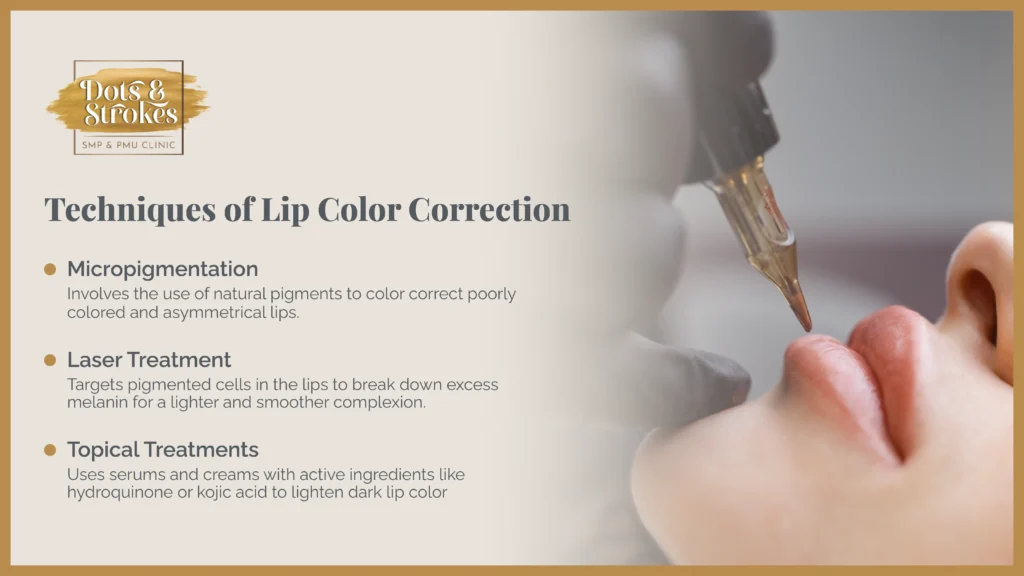
| Long-lasting results | Enjoy enhanced lip color and shape for up to two years without daily makeup application. |
| Customizable | Choose from a range of colors and techniques to achieve your desired look, from a natural tint to a bold statement. |
| Time-saving | Simplify your beauty routine with lips that are always perfectly tinted and defined. |
| Smudge-proof | Unlike lipstick, micropigmentation won’t smudge or wear off, making it ideal for active lifestyles. |
The Procedure for Lip Micropigmentation
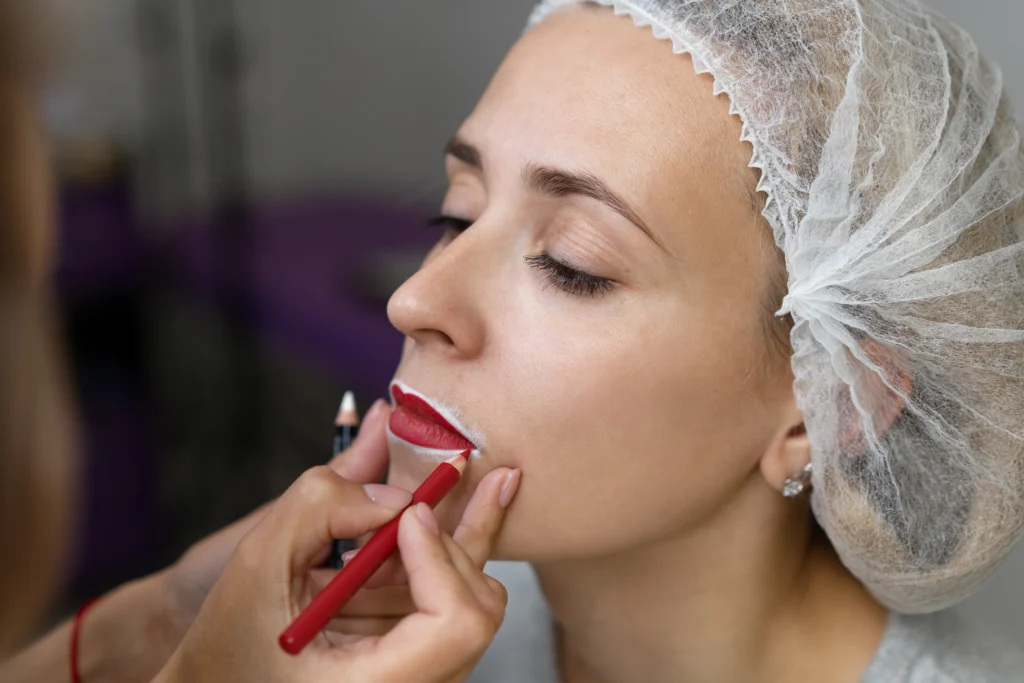
We understand how nervous a person gets before any procedure. Knowing what to expect may help you feel more at ease and be better prepared for your appointment. Here’s a step-by-step guide to what you will experience:
Pre-Procedure Consultation
Before the treatment itself, you will have a consultation with the practitioner you have chosen. This is a critical stage in which you will discuss the desirable outcome by picking the shade of color pigment, asking questions, and airing your misgivings about how the process is conducted. The practitioner will assess your lips’ shape and condition and outline what can be expected during and in the process’s aftermath.
Step-by-Step Process
| Preparation | The area around your lips will be cleaned and a topical numbing cream applied to minimize discomfort during the procedure. |
| Design | The practitioner will outline your lips with a pencil to create a guide for the pigment application. You will have the opportunity to approve this design before proceeding. |
| Pigment Application | Using a fine needle, the practitioner will carefully implant the pigment into the skin. This process typically takes 1-2 hours, depending on the desired intensity and coverage. |
| Layering | Multiple layers of pigment are applied to achieve the perfect shade and ensure long-lasting results. The practitioner will continually check and adjust the colour and shape during this phase. |
Pain Management and Comfort Measures
Although generally well-tolerated, the procedure does have a degree of associated discomfort. The topical numbing cream makes the procedure much less painful, and most of the clients compare it to a light scratching or stinging sensation. Additional numbing agents are available during the procedure if needed to keep the client comfortable.
Aftercare and Healing
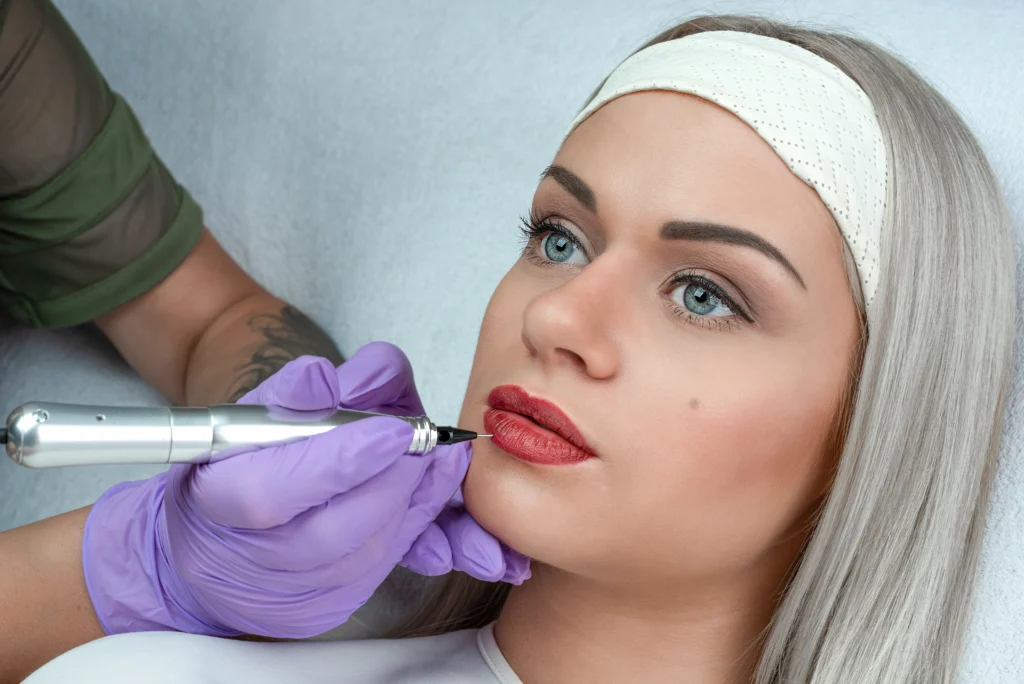
The aftercare is one of the most important steps in the whole process to achieve the best possible results from your lip micropigmentation procedure. Immediate recovery measures will help ensure that your healing process goes smoothly with good colour that will last longer.
Immediate Steps of Aftercare
- Keep the area clean: Gently wash your lips with a mild, fragrance-free soap and water. Pat dry it with a clean towel.
- Apply healing ointment: Follow the ointment recommended by your practitioner to keep your lips moist. This aids healing and helps keep them so soft. Do not use any petroleum-based products unless otherwise instructed.
- Do not pick your lips: Resist the temptation to touch your lips, pick or scratch at them. Doing so can introduce bacteria into the area, causing an infection and may also remove color.
Healing Process and What to Expect
- First Few Days: Your lips will appear more dark, and vibrant immediately after the procedure. There is some minor swelling and tenderness that may last a few days.
- Peeling Phase: On days 3 to 5, your lips start peeling where the superficial layer of pigment exfoliates. The peeling skin should be left alone; do not pick at it.
- Color Lightening: The color will dramatically lighten after the peeling, in a time of about a week. This is very normal, and the final color will stabilize in a few weeks.
After-Care Tips to Maintain Results
- Stay Away from the Sun: Keep your lips out of direct sunlight and UV by using a lip balm with SPF.
- Stay Hydrated: Keep your lips well moisturized so the pigment does not dry out and remains vibrant.
- Maintenance: The color and shape will need to be refreshed by scheduling maintenance sessions with the practitioner.
Choosing the Right Professional
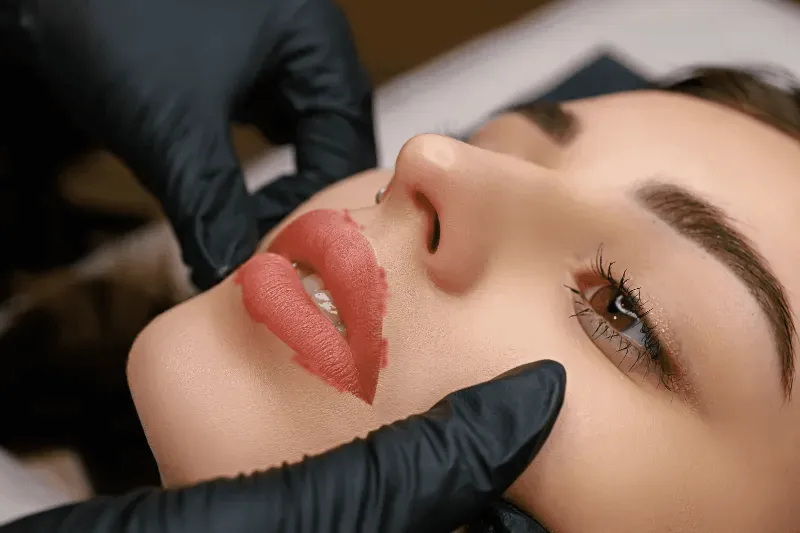
The experience of lip micropigmentation is very important and rests highly on choosing a skilled professional who has experience. Here is what to consider about the choice of practitioner:
What to Look for in a Practitioner
- Certifications and Training: Be sure the practitioner is certified to perform micropigmentation and has completed formal training under a reputable institution.
- Experience: Determine whether the practitioner has enough experience in doing lip micropigmentation. Check their portfolio for examples of their work.
- Hygiene Standards: The clinic should be up to proper hygiene standards as a lot of invasive operations take place, including disposable needles, wearing gloves, and cleanliness of the environment.
What to ask for during the consultation
- How many years has it been since you practiced lip micropigmentation?
- Can I see some before-and-after photos of your previous clients?
- What type of pigments do you use, and are they safe?
- What if there is a complication or unsatisfactory result?
Importance of Certifications and Experience
You may enjoy greater safety with a better-qualified and more experienced practitioner. This kind of professional has undergone extensive training and works according to laid-down standards that reduce risks of complications and assure quality results. The experience brings expertise in achieving natural looks, tailored to your needs and preferences.
Possible Risks and Considerations
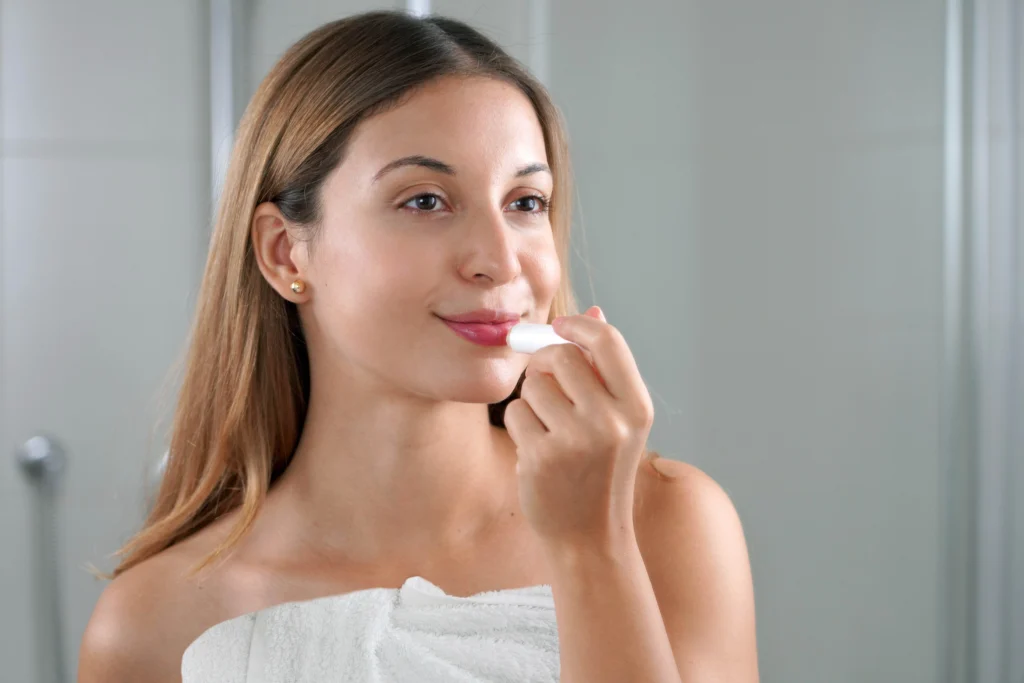
As is the case with any other cosmetic treatment, there are certain risks involved and considerations associated with lip micropigmentation. Knowing these will help you be better placed to make an informed decision and to deal with problems that may arise.
Possible Side Effects and How to Handle Them
- Swelling and Redness: Slight swelling and redness are normal immediately after a procedure and often subside within a few days on their own. The application of a cold compress might be of some use in reducing the symptoms to a certain extent.
- Infection: This is an extremely rare possibility if the aftercare instructions are not followed. Keep the area clean, and avoid touching your lips with unwashed hands.
- Allergic Reactions: Some people are allergic to pigments. A patch test during consultation allows for the identification of any allergic reactions.
- Uneven Pigmentation: The pigment heals unevenly, or in some cases, fades faster in spots. Touch-up sessions can correct this.
Contraindications to the Procedure
- Pregnancy and Lactation: Pregnancy and lactation are usually considered contraindications to lip micropigmentation because of potential risks to the baby.
- Systemic Illness: Herpes simplex, blood clotting disorders, and autoimmune diseases are some conditions wherein a patient should approach the healthcare provider before undergoing the procedure.
- Recent Cosmetic Treatments: If you have had some other cosmetic treatments, such as lip fillers or chemical peels, then your lips must be given time to completely heal before micropigmentation can commence.
Long-Term Care and Touch-Ups
| Regular Maintenance | To maintain the desired colour and shape, schedule touch-up sessions every 1-2 years. |
| Sun Protection | Continual use of SPF on your lips will help preserve the pigment and prevent premature fading. |
| Healthy Lifestyle | Staying hydrated and maintaining a healthy lifestyle can contribute to the longevity of your lip micropigmentation results. |
Conclusion
Lip micropigmentation is the final piece of the puzzle to boost your natural beauty. This outstanding method provides color and definition to your lips, making your everyday routine easy. It can be subtle enhancement or something more intense, but either way, make sure you get a perfect pout. Make sure that you’re in the right hands and take care of your lips post the procedure to enjoy beautiful, well-defined lips for years.
Remember that in-depth research and considerations taken are the keys to a highly successful lip micropigmentation experience. Consult with an experienced and competent practitioner and don’t be afraid to ask necessary questions that you need to know in order to make the right choice.
Now, if you are ready to perfect your pout with lip micropigmentation, book a consultation with a qualified professional now. Your pathway to effortlessly beautiful lips commences right here!
Frequently Asked Questions
Is lip micropigmentation a permanent procedure?
Lip micropigmentation is considered semi-permanent, lasting around 2-5 years. Factors like sun exposure and individual skin type can affect the longevity of the results.
How long does the lip micropigmentation procedure typically take?
The procedure usually takes about 1-2 hours, including numbing time. However, this can vary depending on the complexity of the design and the client’s preferences.
What is the aftercare process for lip micropigmentation?
After the procedure, it’s crucial to keep the lips moisturized with recommended ointments. Avoid direct sunlight, swimming, and certain foods to ensure proper healing and pigment retention.
Can anyone get lip micropigmentation, or are there specific requirements?
While most individuals can undergo lip micropigmentation, pregnant women and those with certain medical conditions may not be suitable candidates. Consultation with a professional is essential to determine eligibility.
How do I choose the right professional for lip micropigmentation?
When selecting a professional for lip micropigmentation, consider their experience, certifications, before-and-after photos of previous clients, and client reviews to ensure quality results and safety.


